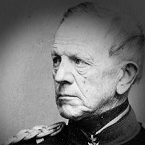As I start this AAR, our GC is currently at t55, and the panzers are trying to break through our lines in Ukraine. The object of these reports is to share some insights on the soviet perception of the war. Feel free to comment. If, because of real-life contingencies, it may not be as detailed as it should, let it be as thorough as it may. It is dedicated to the makers and testers of this fascinating game. A precision : I consider myself reasonably literate in the history of the Eastern front, but not proficient at all with the subtleties of WITE.
For the German perception, you should read the symetric AAR by 2ndAcr. I consider him a formidable opponent and a fine game partner.
k
THE SUMMER AND AUTUMN CAMPAIGN
For the first period of campaigning, the Red Army receives the following objectives. They are, in that order of priority, to:
1/ prevent the capture of Leningrad
2/ block the advance on Moscow as far west as possible
3/ preserve as much as possible of the manpower centers of Eastern Ukraine
4/ minimize the losses inflicted to the Red Army
To give you a glimpse of what things looked like during this first season of war, we'll start a tour at the end of AUGUST, starting with the northern sector:
I managed to keep the Germans west of Pskov for a long time, with a harsh fighting withdrawal and without suffering major encirclements.
The goal is first to hold the frontline while building a backup fortified line on the Luga river and on the river south-west of Lake Ilmen and starting a ring of fortifications on the hills surrounding Leningrad






















